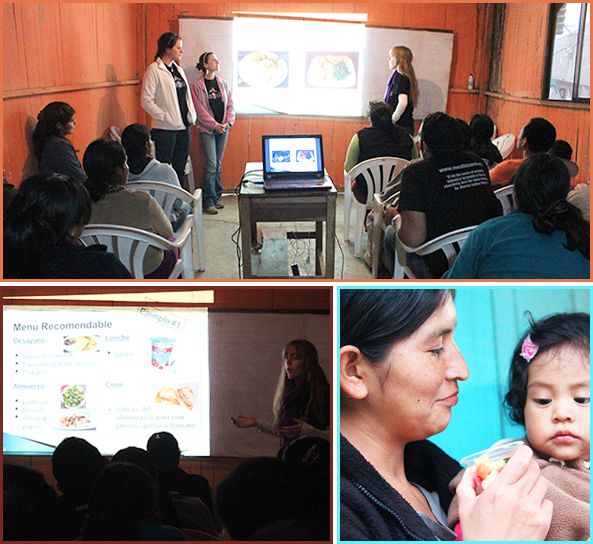Savannah King, a MEDLIFE Summer 2012 Intern in Lima, Peru, writes about her recent work using preventitive nutrition education to combat some of the root causes of malnutrition:
Nutrition. A commonly used word. A commonly found problem. MEDLIFE has already written about it a few times, with good reason. According to UNICEF, of the twenty five regions of Peru, nine have a chronic malnutrition rate in children aged 0-5 of over 30 percent. Preventative and educational programs seem to be the leading campaigns for addressing the nutrition problems in areas like periurban and rural Peru and other South American countries, and many of these programs have seen measurable success.
Of the programs I have reviewed, education is always at the forefront of the battle against malnutrition, stunting and deficiencies. Rather than handing out bottles of supplements, the programs aim to make changes starting at the base: teaching a new mentality about food and providing lessons on basic health and diet knowledge.
For instance, one program stressed three main messages in the populations where they worked. The first message was that serving babies a thick puree at mealtimes will satisfy and nourish the child. The second suggestion was to add a small portion of liver, egg or fish to babies’ plates. These three food options are all inexpensive but bring large health benefits when added to a diet. It is not unreasonable budget-wise to suggest adding these items regularly into meals, and the extra protein and iron contribute largely to the children’s intake of nutrients. Lastly, the third message was umbrella advice about how to eat. The program urged the population to think about meals as a time to eat slowly, enjoy the food and spend time as a family. This simple change in mentality likely also encourages a more happy and positive household environment. Also utilizing tools like food preparation demonstrations and group educational sessions, this program saw a significant (â ) decrease in the rate of stunting, increases in knowledge and preventative behavior and improved feeding practices and growth rates.
Another program focused specifically on pre-natal and newborn care by addressing not only nutrition, but hygiene and proper stimulation of newborns as well. After a four year implementation, the program saw measurable decreases in stunting, vitamin A and iron deficiencies and malnutrition.

Along with other topics including the importance of cervical cancer screening and the risks factors of hypertension, infant nutrition has its own informational pamphlet that MEDLIFE hands out at sites during our weeks of Mobile Clinics. Recently, we went one step further and held a workshop on obesity, breast and cervical cancer and family nutrition. Carolyn, Maureen and I (three of MEDLIFE’s Summer Interns in Lima) presented on the components of a balanced diet, suggested nutritional boosters to the daily diet and explained why each of the food groups is important to one’s body. We finished with a sampling of a fresh, colorful vegetable salad in the hopes of introducing all those present, including mostly mothers and a few children and men, to how tasty and economical a nutritious snack or side dish can be!
Nutrition is an issue not only in Peru, but all over the world. For the most part, though, it is not going unnoticed and, however slowly, non-profits and governments are addressing the problem through various programs and interventions. From the programs I’ve reviewed and the affected people with whom I’ve discussed the topic, it seems education — starting at the pre-born stage — is one of the most important battles that we can fight, and I believe that positive results are inevitable.
